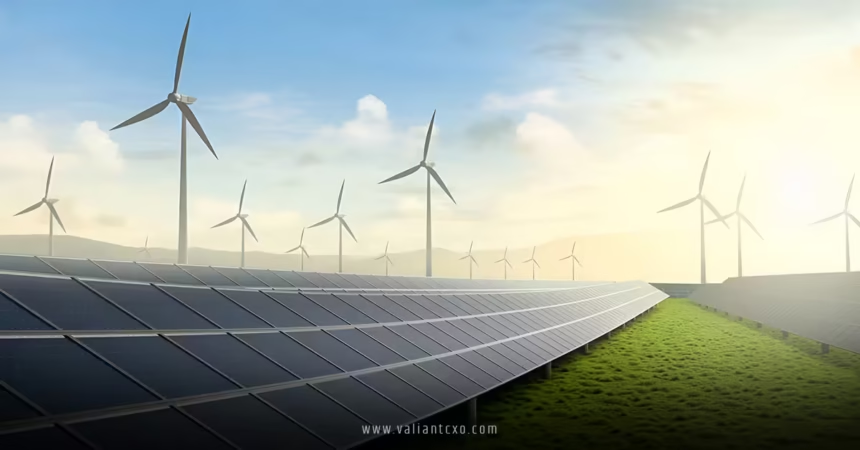Climate Policy and Green Energy Initiatives in the U.S. are steering the nation toward a cleaner, more sustainable future, but what does this journey really look like? Picture a massive ship turning slowly but surely, navigating choppy waters of politics, economics, and environmental urgency. The U.S. has made bold strides in recent years to combat climate change, with policies and innovations driving a shift from fossil fuels to renewable energy. From solar farms sprouting in deserts to wind turbines dotting coastlines, the push for green energy is reshaping how America powers its homes, businesses, and dreams. In this article, we’ll dive deep into the policies, initiatives, and challenges shaping this transformation, exploring why Climate Policy and Green Energy Initiatives in the U.S. matter to everyone—from policymakers to everyday citizens.
Why Climate Policy Matters in the U.S.
The Urgency of Climate Action
Why is climate policy such a big deal? Well, imagine the Earth as a giant thermostat, and human activity has been cranking up the heat. Rising temperatures, melting ice caps, and extreme weather events like hurricanes and wildfires are wake-up calls. The U.S., as one of the world’s largest emitters of greenhouse gases, has a hefty responsibility to act. Climate Policy and Green Energy Initiatives in the U.S. are critical because they set the rules and incentives to cut emissions, protect ecosystems, and ensure a livable planet for future generations. Without strong policies, we’re just tossing buckets of water on a forest fire—temporary fixes for a blazing problem.
A Brief History of U.S. Climate Policy
The U.S. has been wrestling with climate policy for decades, like a boxer in a ring dodging punches. Early efforts, like the Clean Air Act of 1970, laid the groundwork by tackling air pollution. Fast forward to 2009, the American Recovery and Reinvestment Act poured billions into renewable energy and efficiency projects, signaling a shift toward green priorities. The Paris Agreement in 2015 saw the U.S. commit to reducing emissions, though political flip-flopping (hello, 2017 withdrawal and 2021 rejoining) shows how turbulent the policy landscape can be. Today, Climate Policy and Green Energy Initiatives in the U.S. are driven by ambitious goals, like cutting emissions by 50-52% by 2030, as pledged by the Biden administration.
Green Energy Initiatives: Powering a Cleaner Future
Solar Power: Harnessing the Sun’s Potential
Solar energy is like the golden child of renewables—bright, abundant, and full of promise. The U.S. has seen a solar boom, with over 5,000 solar plants now operating nationwide. Costs have plummeted, making solar panels cheaper than ever, and innovations like more efficient photovoltaic cells are boosting output. States like California and Arizona are leading the charge, with sprawling solar farms soaking up rays. Climate Policy and Green Energy Initiatives in the U.S. support this growth through tax credits and grants, encouraging homeowners and businesses to go solar. Ever thought about sticking panels on your roof? It’s becoming a no-brainer for many.
Wind Energy: Catching the Breeze
Wind power is another heavyweight in the renewable ring. Picture massive turbines spinning gracefully, turning gusts into electricity. The U.S. is one of the world’s top wind energy producers, with states like Texas and Iowa hosting vast wind farms. Offshore wind is the new frontier, with projects like the Biden administration’s 2021 offshore wind initiative aiming to power millions of homes by 2030. Climate Policy and Green Energy Initiatives in the U.S. are fueling this expansion with incentives and streamlined permitting. But here’s the catch: how do we balance scenic coastlines with turbine towers? It’s a question policymakers are tackling head-on.
Hydropower and Beyond
Hydropower, the old reliable of renewables, still powers a chunk of the U.S. grid, especially in places like the Pacific Northwest. Meanwhile, emerging players like geothermal and biomass are gaining traction, though they face hurdles like high upfront costs. Climate Policy and Green Energy Initiatives in the U.S. are pushing for innovation here, with research grants and pilot projects. Think of it like planting seeds for a future energy forest—some will grow tall, others might not, but the effort is worth it.
Key Climate Policies Driving Change
The Inflation Reduction Act: A Game-Changer
If Climate Policy and Green Energy Initiatives in the U.S. had a superhero, the Inflation Reduction Act (IRA) of 2022 would be it. This landmark legislation is like a Swiss Army knife for climate action, packed with tools to cut emissions. The IRA offers tax credits for solar, wind, and electric vehicles, funds clean energy manufacturing, and supports underserved communities in transitioning to green energy. It’s estimated to reduce emissions by 40% by 2030—a massive leap. But can it deliver on such lofty promises? Early results, like booming clean energy investments, suggest it’s off to a strong start.
State-Level Leadership
While federal policies grab headlines, states are the real MVPs in many ways. California’s ban on new gas-powered cars by 2035 is a bold move, pushing automakers to go electric. New Mexico’s commitment to 100% renewable electricity by 2050 is another trailblazer. These state-level Climate Policy and Green Energy Initiatives in the U.S. show how local action can ripple nationwide. Ever wonder why some states move faster than others? It often comes down to politics, public support, and economic stakes.
The Role of the EPA
The Environmental Protection Agency (EPA) is like the referee in the climate game, enforcing rules to keep emissions in check. From regulating power plant emissions to setting fuel efficiency standards, the EPA plays a pivotal role. Recent moves, like stricter methane regulations, show it’s not messing around. Climate Policy and Green Energy Initiatives in the U.S. rely on the EPA to hold polluters accountable, but legal battles and political shifts can throw curveballs.
Challenges Facing Climate Policy and Green Energy
Political Pushback
Let’s be real: climate policy is a political hot potato. Some argue it’s too costly or job-killing, especially in fossil fuel-heavy states. The 2017 Paris Agreement withdrawal under Trump showed how fragile progress can be. Climate Policy and Green Energy Initiatives in the U.S. often face resistance from industries and lawmakers wary of economic impacts. It’s like trying to convince someone to switch to a vegan diet at a barbecue—tough sell, but not impossible with the right pitch.
Infrastructure and Investment Hurdles
Building a green energy future isn’t cheap or easy. Think of it like renovating a house while living in it. Upgrading the grid to handle renewables, building charging stations for electric vehicles, and storing surplus energy all require big bucks and time. Climate Policy and Green Energy Initiatives in the U.S. are tackling this with public-private partnerships and federal funding, but the scale of the challenge is daunting. Can we rewire the nation fast enough to meet 2030 goals?
Equity and Accessibility
Who gets to benefit from green energy? Not everyone, if we’re not careful. Low-income communities often lack access to solar incentives or clean energy jobs. Climate Policy and Green Energy Initiatives in the U.S. are starting to address this through programs like the IRA’s Justice40, which directs 40% of federal climate investments to disadvantaged areas. It’s a step toward fairness, but there’s still a long way to go to ensure no one’s left behind in the green revolution.
The Economic and Social Benefits
Job Creation and Economic Growth
Here’s a bright spot: green energy is a job machine. From installing solar panels to maintaining wind turbines, Climate Policy and Green Energy Initiatives in the U.S. are creating millions of jobs. A 2023 study found that a 1% increase in renewable energy use boosts economic growth by 0.21%. Plus, renewables are often cheaper than fossil fuels in the long run, saving consumers money. It’s like planting a money tree that also cleans the air—win-win.
Health and Environmental Gains
Burning fossil fuels is like smoking a pack a day for the planet, leading to air pollution that causes 7 million premature deaths annually, per the World Health Organization. By shifting to renewables, Climate Policy and Green Energy Initiatives in the U.S. are improving air quality and reducing health risks. Cleaner air means fewer asthma cases and hospital visits. Who wouldn’t want to breathe easier?
The Road Ahead: What’s Next?
Innovation and Technology
The future of Climate Policy and Green Energy Initiatives in the U.S. hinges on innovation. Think of it like a tech race—new batteries, carbon capture, and AI-driven energy management are game-changers. The Department of Energy is funding research to make renewables more efficient and affordable. Imagine a world where your car charges itself with solar power while you work. That’s the kind of future these initiatives are chasing.
Global Leadership
The U.S. isn’t just acting for itself—it’s setting an example. By leading on Climate Policy and Green Energy Initiatives in the U.S., the nation can inspire others to follow. The Paris Agreement and global summits like COP21 show the power of collective action. But can the U.S. stay the course amidst global competition and domestic challenges? That’s the million-dollar question.
Engaging Communities
Ultimately, climate action isn’t just about laws or tech—it’s about people. Climate Policy and Green Energy Initiatives in the U.S. need public buy-in to succeed. Education campaigns, community solar projects, and local advocacy are key. Ever joined a neighborhood clean-up or planted a tree? Small actions add up, and policies are starting to empower communities to take part.
Conclusion
Climate Policy and Green Energy Initiatives in the U.S. are more than buzzwords—they’re a roadmap to a sustainable, thriving future. From the Inflation Reduction Act’s bold investments to state-led renewable targets, the U.S. is making strides to cut emissions and embrace clean energy. Challenges like political divides and infrastructure needs loom large, but the benefits—jobs, health, and a healthier planet—are worth the fight. So, what can you do? Support local green initiatives, reduce your energy use, or even explore solar for your home. Every step counts in this journey. Let’s keep pushing for a greener, brighter America.
FAQs
1. What are the main goals of Climate Policy and Green Energy Initiatives in the U.S.?
The primary goals include reducing greenhouse gas emissions by 50-52% by 2030, achieving net-zero by 2050, and transitioning to renewable energy sources like solar and wind to combat climate change effectively.
2. How do Climate Policy and Green Energy Initiatives in the U.S. benefit the economy?
These initiatives create millions of jobs in renewable energy sectors, boost economic growth through investments, and reduce long-term energy costs, fostering stability and innovation.
3. What role do states play in Climate Policy and Green Energy Initiatives in the U.S.?
States like California and New Mexico lead with ambitious policies, such as banning gas-powered cars by 2035 or aiming for 100% renewable electricity, driving national progress.
4. How can individuals support Climate Policy and Green Energy Initiatives in the U.S.?
Individuals can adopt energy-efficient practices, support renewable energy projects, advocate for climate policies, and participate in community initiatives to reduce their carbon footprint.
5. What challenges do Climate Policy and Green Energy Initiatives in the U.S. face?
Key challenges include political resistance, high infrastructure costs, and ensuring equitable access to green energy, requiring coordinated efforts to overcome.
For More Updates !! : valiantcxo.com


